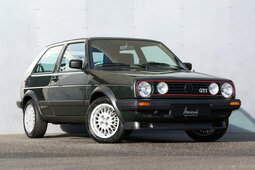Renowned for its dedication to rear-engine placement, Porsche has consistently maintained this feature in its iconic 911 model. We delve into the initial version of the legendary 911 and explore the design choices that contribute to its enduring appeal.
Envisioned as an everyday sports car, the Porsche 911 was meticulously crafted with this objective in mind. The synergy of its components makes this Porsche truly exceptional, and despite only undergoing relatively minor updates, it has remained a beloved classic for over half a century.
No other the 911's feature characterizes it better than its engine– air cooled boxer in the back of the car was an unconventional approach even in 1963, when the model debuted. It had the same layout as its predecessor Porsche 356, Porsche designed VW Beetle or even Tatra 97, which influenced all of these cars. Although the engine was still an air-cooled boxer, it was a brand new 6-cylinder affair. Porsche knew this layout simplified the overall design of the car.
The Porsche 911 was designed without a front radiator, resulting in a more streamlined front end devoid of any drag-causing cooling vents. Moreover, the absence of water lines running through the car further reduced the vehicle's complexity.
While the streamlined front end of the VW Beetle improved fuel efficiency, it enabled the 911 to achieve higher top speeds. Combined with the teardrop-shaped rear, the original 911 was highly aerodynamic. Ferdinand Alexander Porsche, the grandson of Porsche founder Ferdinand Porsche, crafted the design. Discussing the evolution from the Porsche 356 to the 911, he stated, "it had to become a new Porsche that is just as good as or better than the old one, in the same style but not necessarily in the same form." F.A. Porsche firmly believed that form should follow function, a principle he carried forward when establishing Porsche Design.
The similarities between the 911 and the humble VW Beetle make sense once you learn that the 911 was intended to be a 2+2 coupe rather than a two-seater. Putting the engine in the back preserved more passenger space within the wheelbase. The 911 was supposed to seat four people reasonably comfortably. The front seats had to be moved forward to gain some room for the rear-seat passengers. Consequentially, the A-pillars were made steeper, giving the car its signature profile.
Undoubtedly, the open-top version of the 911, the Targa, is as iconic as the coupe, with Porsche continuing to produce this model even today. Originally, the Targa was conceived amid rumours in the US that convertibles would be banned due to safety regulations. Consequently, the 911 convertible project was halted, and the Targa was created. The name Targa was derived from the Italian Targa Florio race, where Porsche excelled and can also mean "a shield" in Italian. The car retains the coupe's silhouette, but the central portion of the roof and the rear window can be removed, leaving only the distinct roll bar. This design enhances structural rigidity, contributing to safety and handling.
911’s design has evolved slightly over half of the century, becoming one of the most recognized shapes in automotive history. While it is well-proportioned and pleasant, it came about from rationality, pursuing speed and comfort.
---
Discover your dream car within our Car Categories, or explore our Classic Passion Shop to uncover thrilling items from our associates!













